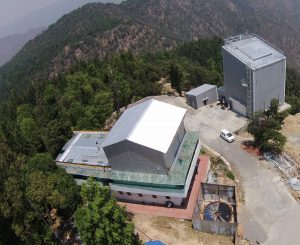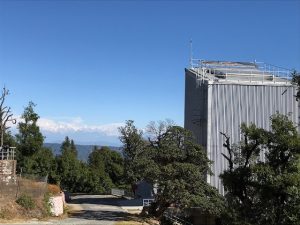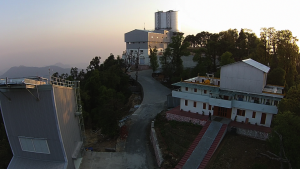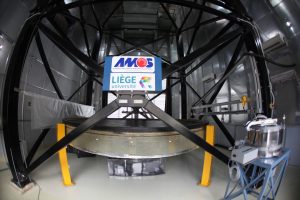SCIENCE WITH A LMT : INTRODUCTION
LMT’s can only observe at the Zenith. Consequently, a LMT continuously monitors the strip of sky passing through the Zenith. The telescope scans a strip of constant declination equal to the latitude of the observatory. Such a strip of constant declination moves in and out of the galactic plane.
Because a LMT observes the same region of the sky night after night, it is possible to:
- co-add the images taken on different nights in order to improve the limiting magnitude attainable with a LMT;
- subtract images taken on different nights to make a variability study of the corresponding strip of sky.
So a LMT is a unique instrument which can be entirely dedicated to the photometric and astrometric survey of a narrow band of the sky. Most of the potential applications of LMTs come from the possibility of constructing photometric light curves of all the objects transiting in the narrow band of sky and its ability to discover objects with variable flux and/or position.
SCIENCE DRIVERS WITH LMTs :
QUASARS AND GRAVITATIONAL LENSES:
search for quasars and multiply imaged quasars induced by gravitational lensing, statistical determination of the cosmological parameters H_0, q_0 and Lambda_0 based upon surveys for multiply imaged quasars. If the mass distribution in the lens is sufficiently well modeled, determination of the mass distribution in the lensing galaxies adopting the value of H_0 as derived from independent techniques.
SUPERNOVAE DETECTION:
search for supernovae, statistical determination of the cosmological parameters H_0, q_0 and Lambda_0 based upon surveys for supernovae, search for faint extended objects such as galactic nebulae, supernova remnants, …
OTHER SCIENTIFIC TOPICS:
trigonometric parallaxes of faint nearby objects (e.g. brown dwarfs, …), observational studies of large scale structures, detection of high stellar proper motions to probe a new range of small scale kinematics (stars, trans-neptunian objects, …), astrometry of multiple star systems, a wide range of photometric variability studies (cf. photometry of stars, RR Lyrae, micro-lensing effects, photometry of variable AGN over day to year time scales, …), search for low surface brightness and star-forming galaxies, galaxy clustering and evolution, serendipitous phenomena, and, finally, production of a unique database for follow up studies with the 3.6m DOT, VLT, Gemini, SALT and other 8-10m class telescopes.





